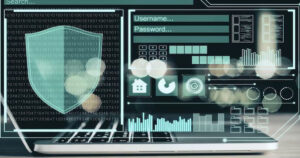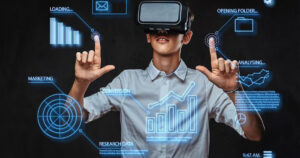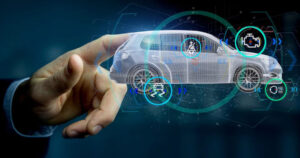Technologies Transforming The Education : In today’s fast-paced and technology-driven world, the educational landscape is evolving at a remarkable pace. With the integration of emerging technologies, traditional teaching methods are undergoing a profound transformation, empowering educators and learners alike. This article delves into the ten most influential emerging technologies that are revolutionizing education, highlighting their significance and potential impact.
Technologies Transforming The Education
1 . Artificial Intelligence (AI) in Education
Artificial Intelligence, once confined to the realm of science fiction, is now making remarkable strides in the educational sector. AI’s application in adaptive learning platforms tailors educational content to individual student needs, ensuring a personalized and optimized learning experience. Intelligent tutoring systems, empowered by AI algorithms, offer real-time feedback and guidance, nurturing students’ knowledge acquisition process. Additionally, AI-driven automated essay grading not only expedites evaluation but also provides valuable insights into students’ writing skills, enabling educators to offer targeted feedback for improvement.
2. Virtual And Augmented Reality (VR/AR) In Education
Virtual and Augmented Reality technologies are revolutionizing the way students learn by offering immersive experiences. VR-based learning takes students on virtual field trips, enabling them to explore historical sites, natural wonders, and distant planets from the confines of their classrooms. AR enhances hands-on training by overlaying digital content onto the physical world, enriching the learning process in subjects like science and engineering. These technologies not only captivate students’ interest but also foster a deeper understanding of complex concepts.
3. Internet Of Things (IoT) In Education

The Internet of Things has found its way into the education sector, transforming conventional classrooms into smart learning spaces. IoT-enabled devices and sensors offer data-driven insights, optimizing classroom management and improving the learning environment. Personalized learning experiences are facilitated through IoT devices, which track students’ progress and tailor educational content accordingly. Moreover, IoT technology enhances student safety by monitoring campus premises and facilitating emergency response protocols.
4. Blockchain Technology In Education
Blockchain technology is revolutionizing academic credentialing and certification processes. By decentralizing record-keeping, educational institutions can ensure the authenticity of certificates and transcripts, mitigating the risk of document fraud. Moreover, blockchain’s transparent and secure nature facilitates efficient management of student data, enabling seamless transfer of records between institutions while preserving data integrity. Additionally, this technology discourages plagiarism by ensuring the originality of academic work.
5. Gamification And Game-Based Learning
Gamification and game-based learning are innovative techniques that engage students by incorporating game elements into educational content. Through gamification, students earn points or rewards for completing tasks, stimulating a sense of achievement and motivation. Game-based learning leverages the inherent fun of games to teach complex subjects, promoting active participation and knowledge retention. Furthermore, gamification fosters collaboration and healthy competition among students, encouraging teamwork and social skills development.
6. 3D Printing In Education
The advent of 3D printing has opened up a world of possibilities in education. This technology enables students to materialize their ideas and designs, fostering creativity and innovation. From creating intricate models for architectural projects to understanding complex anatomical structures, 3D printing offers hands-on learning experiences that transcend traditional theoretical teaching methods. Additionally, 3D printers have practical applications across various disciplines, from engineering and medicine to art and design.
7. Cloud Computing In Education

Cloud computing has revolutionized how students and educators access and share information. Cloud-based collaboration platforms facilitate seamless teamwork on projects and assignments, regardless of geographical constraints. Educational institutions benefit from scalable and cost-effective infrastructure, eliminating the need for extensive on-site server setups. Cloud technology also ensures easy access to educational resources from any device, enabling a flexible and modern learning experience.
8. Robotics In Education
Integrating robotics into the curriculum enhances students’ problem-solving and critical thinking abilities. Robotics projects require students to apply theoretical knowledge to real-world challenges, fostering a deeper understanding of scientific principles and engineering concepts. Moreover, robotics education prepares students for future job opportunities in fields like automation, artificial intelligence, and advanced manufacturing, equipping them with the skills demanded by the evolving job market.
9. Big Data Analytics In Education
Big Data analytics plays a pivotal role in transforming education by offering data-driven insights. By analyzing student performance data, educators can create personalized learning pathways that cater to individual strengths and weaknesses. Early intervention based on predictive analytics helps identify struggling students and provide timely support, ensuring improved learning outcomes. Administrators can also leverage Big Data to optimize resource allocation and make data-informed decisions for continuous improvement.
1O. Biometric Technology In Education

Biometric technology is reshaping the landscape of student attendance tracking and security. With biometric systems, schools can accurately record attendance, minimizing errors and streamlining administrative processes. Biometric data can also be analyzed to gain insights into students’ behavior and engagement levels, helping educators tailor instructional approaches to suit different learning styles. However, the ethical considerations surrounding biometric data usage require careful attention to safeguard student privacy.
Also Read : 10 Impressive Uses Of Artificial Intelligence In Everyday Life
Conclusion
The convergence of emerging technologies with the educational landscape marks a significant turning point in the way knowledge is imparted and acquired. Embracing these innovations empowers educational institutions to create a more efficient, inclusive, and engaging learning environment. By harnessing the potential of artificial intelligence, virtual reality, blockchain, and other cutting-edge technologies, educators and students embark on a journey towards a future where learning knows no bounds, and knowledge becomes boundless.
Source Image : Freepik.com





